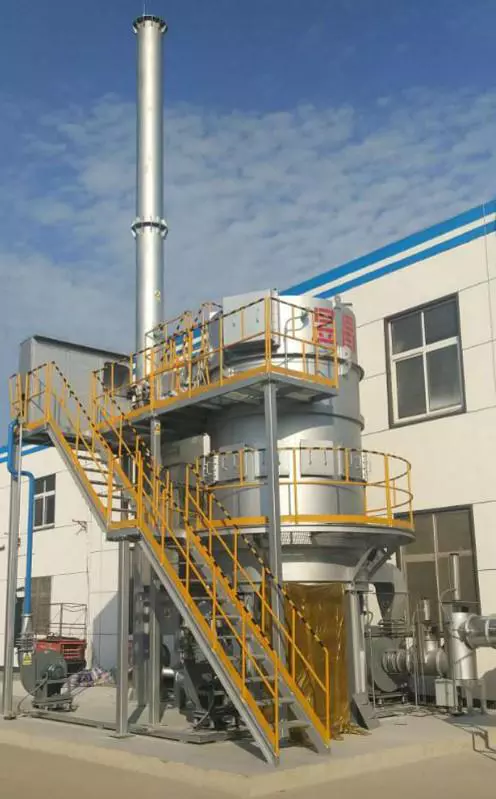Recuperative Thermal Oxidizer Troubleshooting
pengenalan
A recuperative thermal oxidizer is an essential component in industrial processes for the destruction of volatile organic compounds (VOCs) and other air pollutants. It operates by using high temperatures to break down these harmful substances into less harmful byproducts. However, like any complex system, a recuperative thermal oxidizer may encounter issues that require troubleshooting. This article will provide a detailed exploration of the various troubleshooting aspects associated with a recuperative thermal oxidizer.
Common Issues
- Flame Instability
- Excessive Fuel Consumption
- Insufficient VOC Destruction Efficiency
Flame instability can occur due to issues such as improper fuel-air mixture, inadequate burner maintenance, or burner malfunction. To address this issue, it is crucial to inspect the burner, adjust the fuel-air ratio, and ensure proper maintenance procedures are followed.
Excessive fuel consumption may stem from equipment inefficiencies, improper heat recovery, or combustion chamber leaks. To mitigate this problem, regular inspections and maintenance of heat exchangers, burners, and combustion chambers are necessary. Additionally, optimizing heat recovery systems can help improve fuel efficiency.
If a recuperative thermal oxidizer fails to achieve the desired VOC destruction efficiency, it could be due to factors such as improper temperature control, inadequate residence time, or malfunctioning control systems. To rectify this, it is essential to calibrate temperature sensors, ensure sufficient residence time, and conduct thorough checks of the control systems.
Heat Exchanger Troubleshooting
The heat exchanger is a critical component of a recuperative thermal oxidizer. Issues with the heat exchanger can result in decreased system efficiency and performance. Some common heat exchanger problems include:
- Heat Exchanger Fouling
- Heat Exchanger Leakage
Heat exchanger fouling occurs when deposits accumulate on the heat transfer surfaces, reducing heat transfer efficiency. Routine cleaning and maintenance can help prevent fouling and ensure optimal heat exchange.
Leakage in the heat exchanger can lead to heat loss and reduced system performance. Regular inspections and prompt repair of any leaks are necessary to maintain the efficiency of the heat exchanger.
Control System Troubleshooting
The control system of a recuperative thermal oxidizer plays a crucial role in maintaining proper operation. Issues with the control system can disrupt the oxidizer’s performance. Common control system problems include:
- Sensor Malfunction
- Control Panel Errors
Malfunctioning temperature, pressure, or flow sensors can result in inaccurate readings, leading to improper system control. Regular sensor calibration and replacement, if necessary, are essential for reliable performance.
Errors in the control panel can hinder the proper functioning of the recuperative thermal oxidizer. Thorough checks of the control panel, including wiring and software, are necessary to identify and resolve any errors.

Kesimpulan
Effective troubleshooting of a recuperative thermal oxidizer is crucial for maintaining its performance and ensuring compliance with environmental regulations. Regular inspections, proper maintenance, and prompt resolution of issues are key to optimizing the functionality of the system. By addressing common issues related to flame instability, excessive fuel consumption, insufficient VOC destruction efficiency, heat exchanger problems, and control system malfunctions, industries can enhance the operational efficiency and reliability of their recuperative thermal oxidizers.
Introduction to Our Company
We are a high-tech equipment manufacturing enterprise that focuses on the comprehensive treatment of volatile organic compounds (VOCs) in waste gas and carbon reduction and energy-saving technology. Our core technologies include thermal energy, combustion, sealing, and self-control. We have the ability to simulate temperature fields and air flow fields, model calculations, compare ceramic heat storage materials, molecular sieve adsorption materials, and carry out high-temperature incineration and oxidation experiments and tests of VOCs organic matter.
Our company has established an RTO technology R&D center and waste gas carbon reduction engineering technology center in Xi’an and a 30,000©O production base in Yangling. We are a leading manufacturer of RTO equipment and molecular sieve rotary equipment in the world. Our core technology team comes from the Institute of Liquid Rocket Engines of China Academy of Aerospace (Sixth Academy). Our company has more than 360 employees, including more than 60 R&D technology backbones, including 3 senior engineers of research professors, 6 senior engineers, and 30 thermodynamic doctors.
Our core products are the rotary valve type heat storage oxidation incinerator (RTO) and molecular sieve adsorption and concentration rotary wheel. Combining our own environmental protection and thermal energy system engineering technology expertise, we can provide customers with comprehensive treatment of industrial waste gas under various working conditions and overall solutions for carbon reduction and utilization of thermal energy.
Pensijilan dan Kelayakan
Our company has obtained certifications and qualifications in various fields, including:
- Intellectual Property Management System Certification
- Pensijilan Sistem Pengurusan Kualiti
- Pensijilan Sistem Pengurusan Alam Sekitar
- Kelayakan Perusahaan Industri Pembinaan
- High-Tech Enterprise
- Rotating Valve Heat Storage Oxidation Furnace Steering Valve Patent
- Rotary Heat Storage Incineration Equipment Patent
- Disc Type Molecular Sieve Rotary Wheel Patent

How to Choose the Right RTO Equipment
Choosing the right RTO equipment requires careful consideration of several factors:
- Identify the waste gas characteristics
- Understand the local regulations and emission standards
- Menilai kecekapan tenaga
- Pertimbangkan operasi dan penyelenggaraan
- Conduct budget and cost analysis
- Select the appropriate type of RTO
- Pertimbangkan faktor persekitaran dan keselamatan
- Conduct performance testing and verification

Proses Perkhidmatan Kami
We offer a comprehensive service process that includes:
- Consultation and evaluation: Initial consultation, on-site inspection, and needs analysis
- Design and solution development: Scheme design, simulation modeling, and scheme review
- Production and manufacturing: Customized production, quality control, and factory testing
- Installation and commissioning: On-site installation, commissioning, and training services
- Sokongan selepas jualan: Penyelenggaraan tetap, sokongan teknikal dan bekalan alat ganti
We provide one-stop solutions, and our professional team can tailor RTO solutions for customers.
Pengarang: Miya
